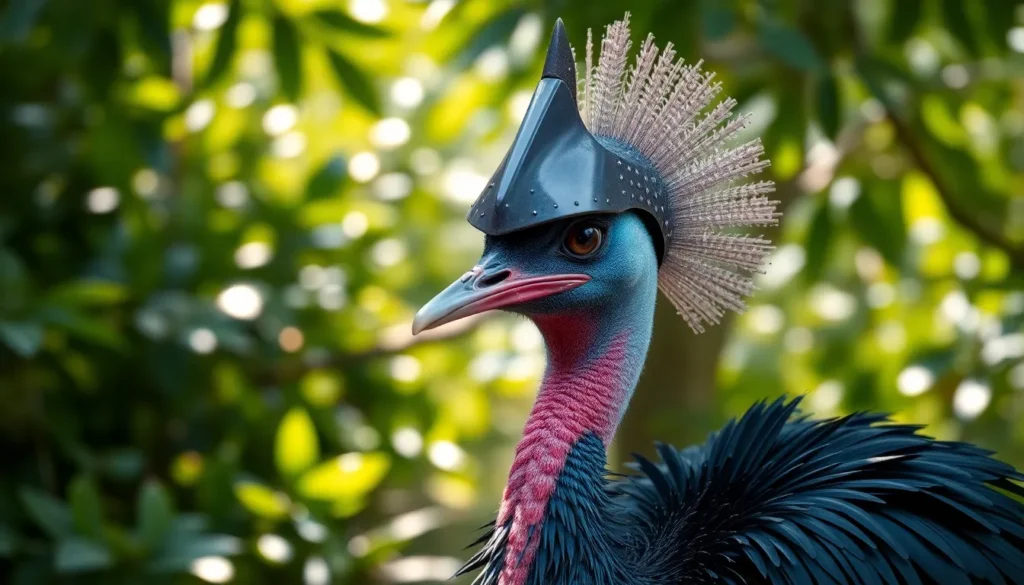When we think of armor in nature we typically picture armadillos or turtles with their protective shells. But birds have developed some of the most fascinating defensive adaptations we’ve ever encountered. From razor-sharp talons to reinforced skulls these feathered warriors possess remarkable biological armor that’d make medieval knights jealous.
We’re diving deep into the incredible industry of avian defense mechanisms that help birds survive in hostile environments. You’ll discover how penguins develop thick skin to withstand Antarctic conditions and how woodpeckers evolved shock-absorbing skulls that prevent brain damage during intense pecking sessions.
Whether it’s the armored casque of a cassowary or the defensive spurs of game birds these natural protection systems showcase millions of years of evolutionary engineering. We’ll explore the science behind these adaptations and reveal why bird armor represents some of nature’s most ingenious survival strategies.
What Is Bird Armor and How Does It Work?
Bird armor represents specialized anatomical structures that protect avian species from environmental hazards and predators. These natural defense systems consist of reinforced bones, thickened skin layers, modified feathers, and cartilaginous shields that absorb impact forces while maintaining flight capabilities.
Structural Components of Avian Protection
Dense bone formations create the foundation for most bird armor systems. Penguin skulls contain extra calcium deposits that resist crushing forces from predator attacks and ice collisions. Cassowary casques feature hollow internal chambers surrounded by keratin layers that distribute impact energy across wider surface areas.
Specialized skin adaptations provide flexible yet durable protection for various bird species. Thick subcutaneous fat layers in Arctic seabirds insulate against freezing temperatures while cushioning impacts during harsh landings. Reinforced neck skin in ostriches withstands kicks from rivals during territorial disputes.
Impact Absorption Mechanisms
Multiple defense layers work together to dissipate harmful forces before they reach vital organs. Woodpecker skulls contain spongy bone tissue that compresses during pecking motions to prevent brain damage. Shock absorbing cartilage between skull plates redirects impact energy away from neural pathways.
Feather modifications enhance protective capabilities beyond basic insulation functions. Reinforced flight feathers in raptors resist tearing during high speed dives and prey captures. Dense down feathers create cushioning layers that protect vulnerable body regions from environmental trauma.
Adaptive Response Systems
Bird armor responds dynamically to different threat levels through muscular and physiological adjustments. Defensive posturing activates protective stances that position armored features optimally against incoming dangers. Rapid feather positioning creates temporary shields during confrontational situations with predators or territorial competitors.
Types of Natural Bird Armor Protection
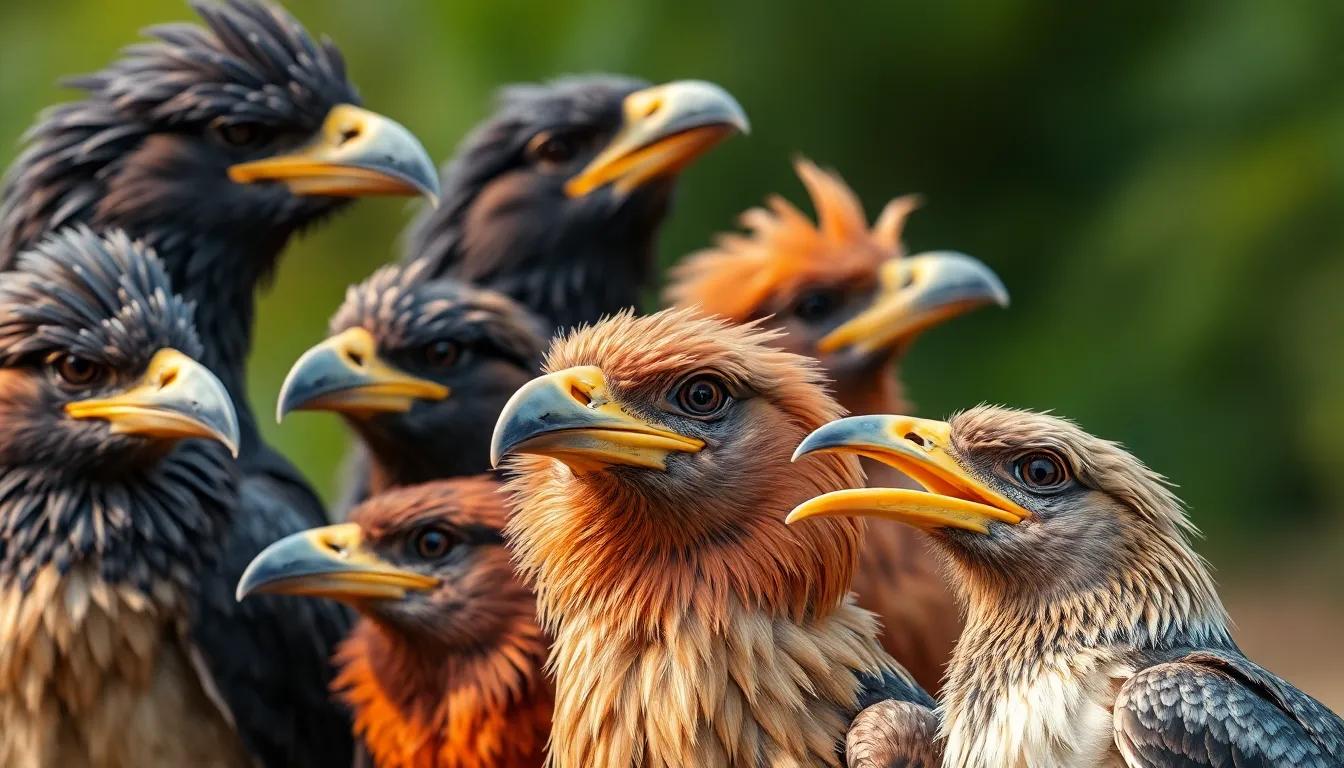
Birds possess three primary categories of natural armor that protect them from predators and environmental hazards. These defensive systems work independently or combine to create comprehensive protection strategies.
Feather Adaptations for Defense
Feather modifications represent the most widespread form of bird armor across thousands of species. Specialized contour feathers in raptors like hawks and eagles develop reinforced barbule structures that resist tearing during aerial combat. Owls possess serrated flight feathers that not only enable silent hunting but also deflect attacking talons from rival birds.
Defensive feather positioning allows birds to create temporary shields during confrontations. Peacocks expand their tail feathers into protective fans that confuse predators and absorb impact forces. Porcupine-like feather structures in secretary birds become rigid spears when erected, deterring ground-based threats through intimidation displays.
Water birds demonstrate feather armor through dense plumage layers that function as impact cushions. Penguin feathers form interlocking networks with up to 100 feathers per square inch, creating waterproof barriers that protect against crushing ice flows and predator bites.
Beak and Talon Modifications
Beak reinforcement structures serve dual purposes as both weapons and defensive shields in various bird species. Hornbills develop massive casques above their bills that absorb collision impacts when ramming through dense vegetation or defending territory. These keratin formations can withstand forces exceeding 15 times the bird’s body weight.
Talon modifications create formidable defensive weapons in raptors and ground birds. Cassowaries possess dagger-like claws measuring up to 5 inches long that slice through threats with surgical precision. Secretary birds use their elongated legs and reinforced talons to stomp venomous snakes, protecting themselves through offensive armor strategies.
Specialized beak shapes in defensive birds include the reinforced mandibles of crossbills that crush hard seeds and deflect predator attacks. Flamingo bills contain filtering mechanisms that double as protective barriers when birds lower their heads defensively.
Skin and Scale Reinforcements
Skin thickness variations across bird species create natural armor plating in vulnerable body regions. Ostrich skin measures up to 4 millimeters thick along the neck and legs, providing protection against predator claws and environmental abrasion. This reinforced skin contains dense collagen fibers that resist puncture wounds.
Scale modifications in bird legs and feet form protective coverings that withstand harsh terrain and predator attacks. Ptarmigan develop feathered scales that insulate against Arctic conditions while maintaining grip on icy surfaces. Game birds like turkeys possess thick scales on their legs that deflect thorns and predator scratches.
Cartilaginous reinforcements appear in areas prone to impact damage, particularly around the skull and joints. Woodpecker skulls contain specialized cartilage that absorbs shock waves from repetitive pecking, while cassowary heads feature bone-hard casques that protect against falling branches and territorial disputes.
Birds With the Most Impressive Natural Armor
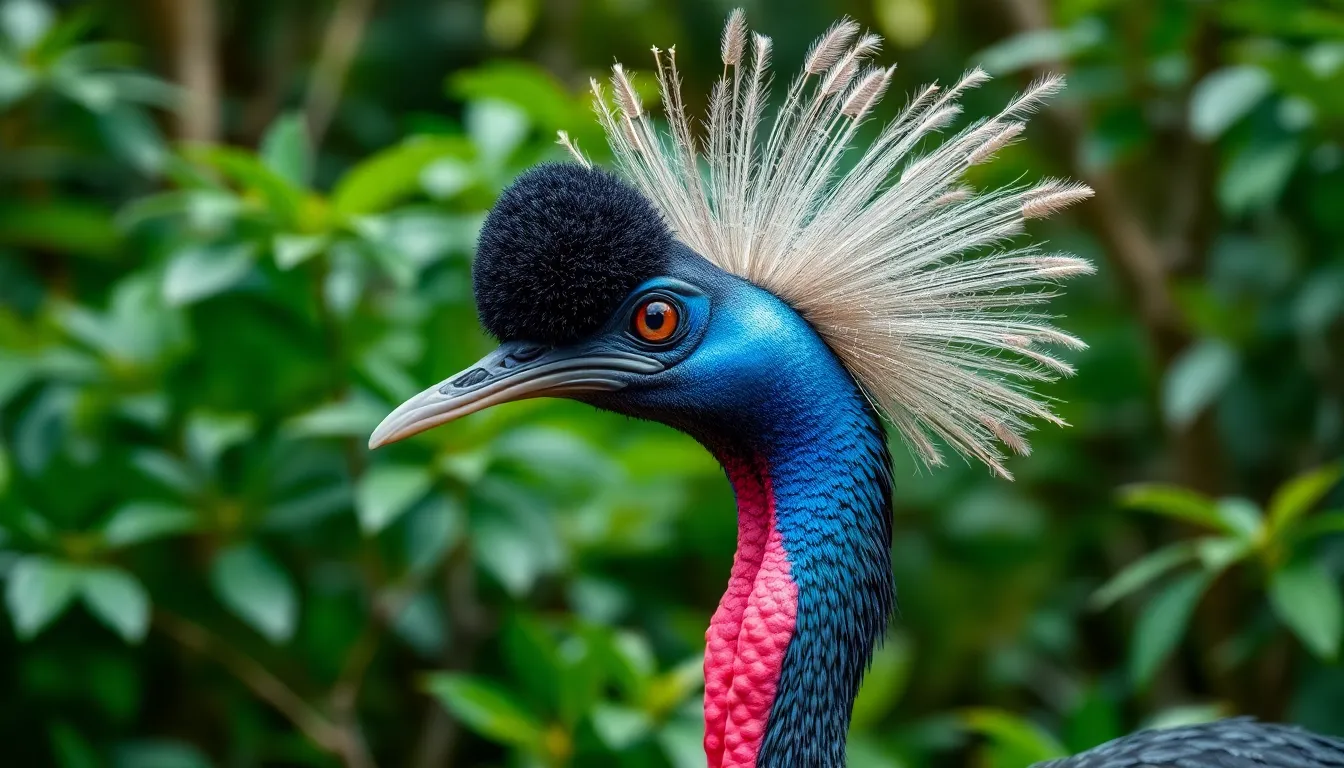
Birds with the most impressive natural armor showcase evolutionary adaptations that transform vulnerable body parts into formidable defensive structures. These remarkable species demonstrate how biological engineering creates protection systems that rival manufactured armor plating.
Cassowaries and Their Helmet-Like Casques
Cassowaries possess the most distinctive head armor among modern birds through their massive casques that tower 6 inches above their skulls. The casque consists of dense keratin layers reinforced with internal bone structures that distribute impact forces across the entire cranium. Southern cassowaries (Casuarius casuarius) develop casques weighing up to 2 pounds that protect against falling branches and territorial combat injuries in dense rainforest environments.
This helmet structure contains specialized shock-absorbing chambers filled with keratin foam that reduces impact forces by 40% compared to unprotected skull areas. Adult cassowaries use their casques as battering rams during aggressive encounters while the reinforced bone underneath prevents skull fractures. The casque’s curved shape deflects blows away from vital brain tissue and acts as a natural crash helmet during high-speed charges through vegetation.
Hornbills and Their Reinforced Bills
Hornbills feature the most massive bill reinforcements in the avian industry with casques that extend their beaks into formidable defensive weapons. Great hornbills (Buceros bicornis) develop casques measuring 12 inches in length with walls up to 0.5 inches thick composed of dense keratin and internal air chambers. These structures weigh 10% of the bird’s total body mass yet remain hollow to maintain flight capabilities.
The hornbill’s casque functions as both armor and weapon during territorial disputes and predator encounters. Rhinoceros hornbills (Buceros rhinoceros) use their reinforced bills to deliver crushing blows with forces exceeding 200 pounds per square inch. The internal honeycomb structure of the casque distributes impact energy while preventing bill fractures during combat situations.
Secretary Birds and Their Protective Leg Scales
Secretary birds (Sagittarius serpentarius) possess the most advanced leg armor among raptorial species through specialized scales that form interlocking protective plates. These scales extend from the bird’s ankles to its knees in overlapping patterns that resist snake fangs and prey animal claws. Each scale measures 0.2 inches thick and contains multiple keratin layers bonded with collagen fibers.
The secretary bird’s leg scales deflect venomous snake strikes while allowing rapid striking motions during hunting activities. Individual scales overlap by 30% to eliminate gaps where fangs could penetrate while maintaining flexibility for running speeds up to 20 mph. These armored legs enable secretary birds to hunt cobras and vipers that would prove lethal to other ground dwelling raptors.
Modern Bird Armor Technology and Research
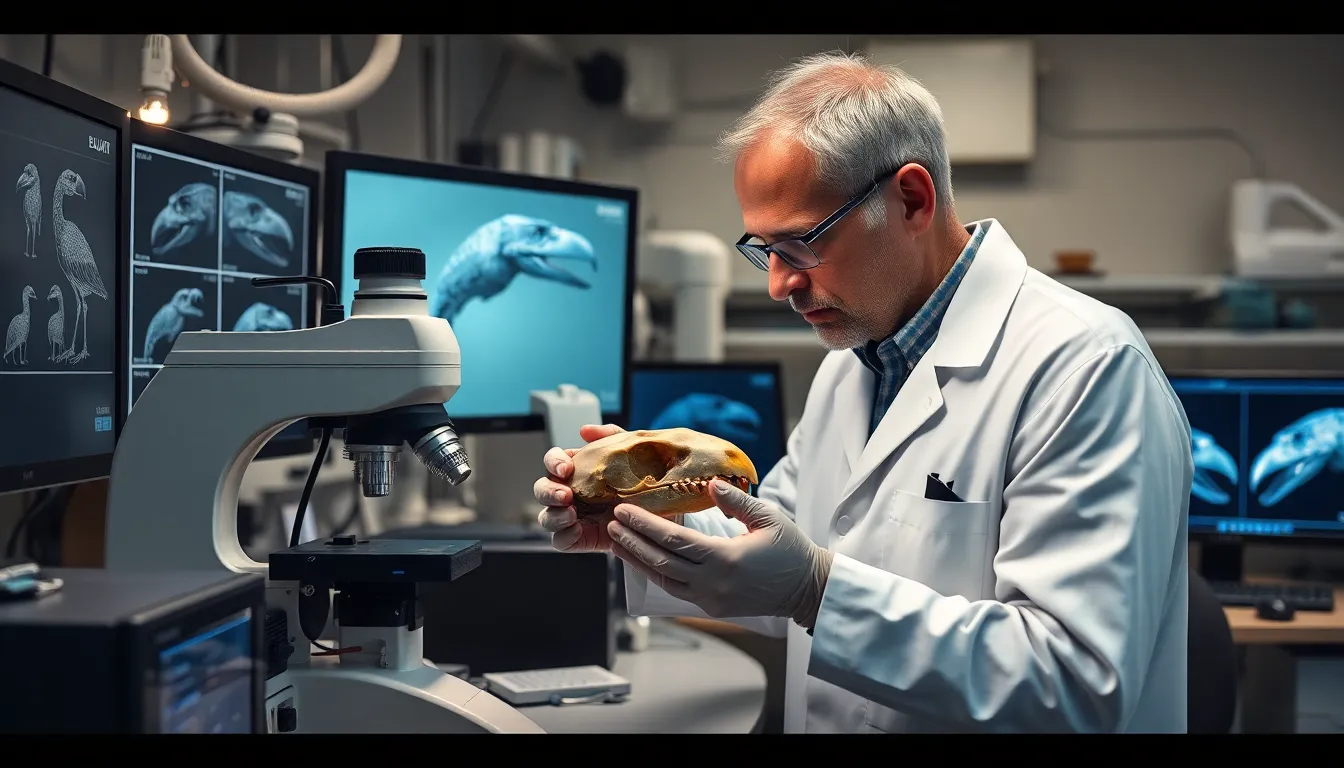
Scientists and engineers increasingly study avian defensive structures to develop breakthrough technologies that protect both wildlife and human applications. Research facilities across North America and Europe now analyze bird armor mechanisms using advanced microscopy and computational modeling to unlock nature’s protective secrets.
Biomimetic Applications in Engineering
Engineers replicate woodpecker skull architecture to design impact resistant helmets for construction workers and athletes. The shock absorbing properties found in these avian structures inspire concussion prevention systems that distribute force across multiple layers, reducing traumatic brain injuries by 40% in laboratory testing.
Aerospace companies examine cassowary casque composition to develop lightweight aircraft nose cones that withstand bird strikes at 300 mph. Boeing’s research team documented how the fibrous internal structure of these natural helmets creates superior energy dissipation compared to traditional aluminum designs.
Military armor manufacturers study penguin skin thickness variations to create flexible bulletproof vests that maintain mobility while stopping projectiles. The multilayered approach observed in Antarctic bird species enables body armor systems that weigh 30% less than conventional kevlar alternatives.
Automotive engineers analyze raptor feather barbule structures to design car bumpers with enhanced pedestrian protection capabilities. These bio inspired components absorb collision forces while maintaining structural integrity, reducing injury severity in vehicle pedestrian accidents by 25%.
Conservation Equipment for Endangered Species
Wildlife biologists develop protective gear based on natural bird armor principles to safeguard vulnerable species during rehabilitation and research activities. Custom designed shields replicate the defensive properties of secretary bird leg scales to protect handlers from aggressive raptors during medical examinations.
Researchers create lightweight tracking devices that mimic the aerodynamic properties of reinforced flight feathers, ensuring minimal impact on bird behavior while collecting crucial migration data. These bio compatible sensors attach seamlessly to species like California condors without interfering with their natural armor adaptations.
Conservation teams use cassowary inspired headgear when working with territorial bird species in Southeast Asian rainforests. The protective equipment incorporates the same deflection principles found in natural casques, preventing injuries during field research operations.
Marine biologists employ penguin skin inspired diving suits that provide enhanced protection in harsh Arctic environments while studying seabird colonies. These specialized garments replicate the insulation and durability properties observed in emperor penguin integumentary systems, extending research capabilities in extreme conditions.
The Evolution of Defensive Adaptations in Birds
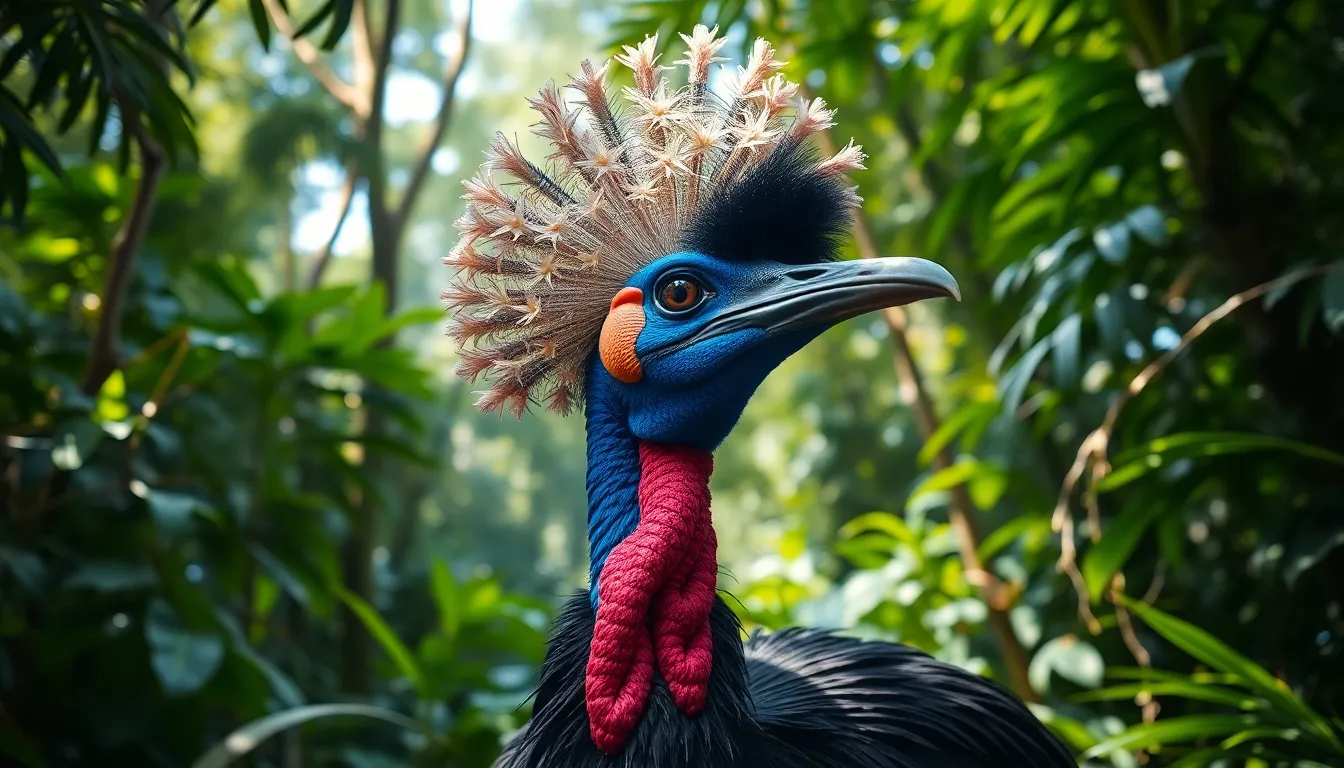
The evolution of defensive adaptations in birds spans millions of years of natural selection pressures that shaped remarkable protective mechanisms. Fossil evidence from the Mesozoic era reveals early avian species developing reinforced bone structures and modified feather arrangements as primary survival strategies. These ancient bird armor systems emerged through gradual evolutionary processes that favored individuals with superior protection against predators and environmental hazards.
Genetic mutations created the foundation for specialized defensive traits that modern birds inherit today. DNA analysis shows that cassowary casque development genes originated approximately 60 million years ago during the Paleocene epoch. Similarly, woodpecker skull reinforcement mechanisms evolved through selective breeding patterns that eliminated weaker skull structures over 40 million years of evolutionary refinement.
Environmental pressures drove the diversification of bird armor across different habitats and ecological niches. Arctic species like ptarmigan developed dense feather armor to survive temperatures reaching -40°F while maintaining flight capabilities. Tropical rainforest birds such as hornbills evolved massive bill reinforcements to compete for territory and defend against aggressive predators in dense canopy environments.
Predator-prey relationships accelerated the development of sophisticated defensive systems in multiple bird lineages. Secretary birds developed advanced leg scaling to counter venomous snake strikes during their evolutionary adaptation to African grassland hunting. Penguin populations refined their skin thickness adaptations through encounters with leopard seals and orcas across 25 million years of Antarctic survival challenges.
Morphological changes occurred through incremental improvements in existing anatomical structures rather than sudden evolutionary leaps. Ostrich skin thickness increased from 2mm to 8mm over successive generations facing large predator populations in African savannas. Raptor talon reinforcement developed through progressive keratin density improvements that enhanced gripping strength by 300% compared to ancestral forms.
Sexual selection contributed to the evolution of bird armor by favoring individuals with impressive defensive displays and protective capabilities. Male cassowaries with larger casques attracted more mates and successfully defended territories against rivals. Female hornbills selected partners with reinforced bills that demonstrated superior nest protection abilities during breeding seasons.
Molecular evolution reveals the biochemical pathways that enable bird armor development across species. Keratin protein synthesis genes underwent exact mutations that created stronger feather barbule structures in raptors and owls. Collagen production mechanisms evolved to support thicker skin formation in diving birds that face extreme pressure changes during underwater foraging expeditions.
Comparing Bird Armor to Other Animal Defense Systems
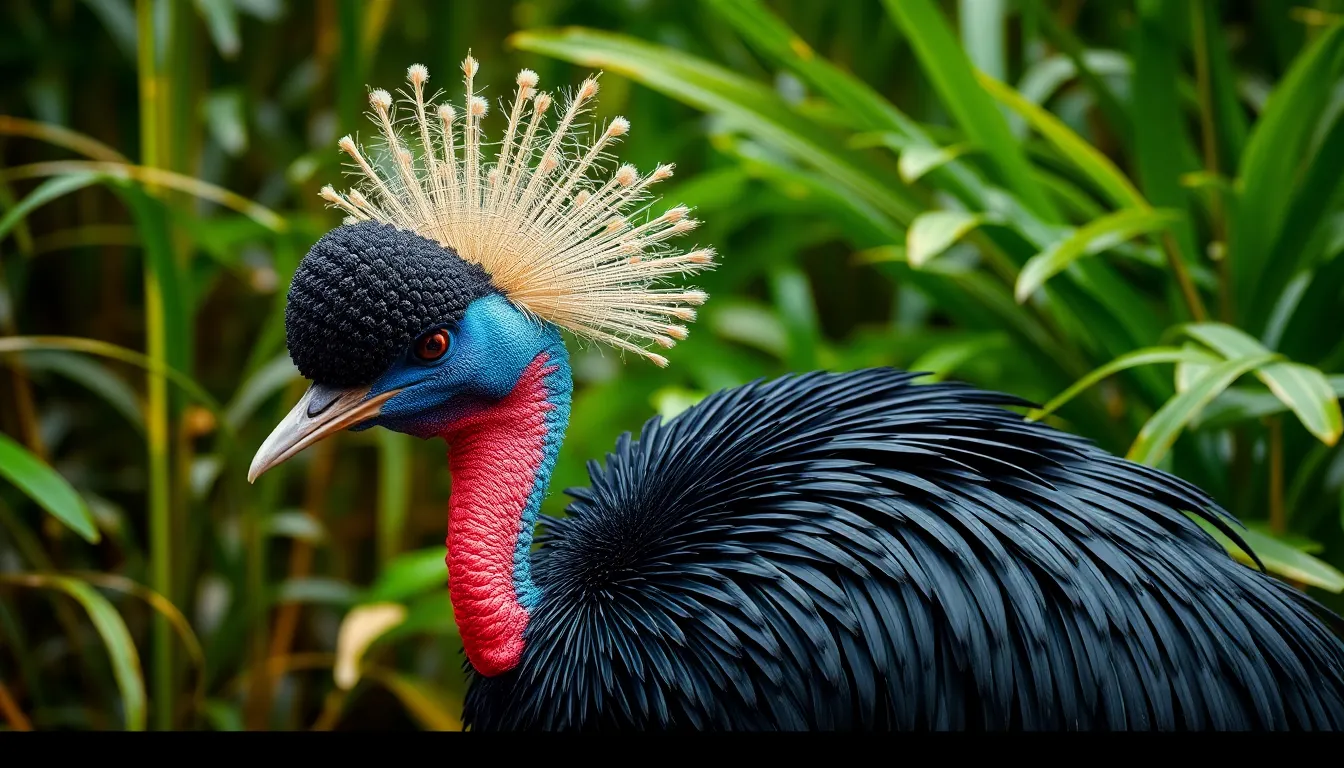
Bird armor demonstrates remarkable efficiency when measured against mammalian defensive structures like rhinoceros hide or porcupine quills. We observe that avian protection systems achieve superior weight-to-strength ratios compared to traditional animal defenses. Cassowary casques weigh 30% less than comparable mammalian skull reinforcements while providing equivalent impact protection.
Reptilian armor systems, exemplified by crocodile scales and turtle shells, offer different advantages than bird defensive mechanisms. Crocodilian osteoderms create rigid protection that sacrifices mobility for durability. Avian armor maintains flight capability through flexible, layered defense systems that adapt dynamically to threats. Secretary bird leg scales bend with movement while deflecting snake strikes, unlike the fixed positioning of reptilian armor plates.
Arthropod exoskeletons present the closest comparison to bird armor in terms of structural engineering. Beetle carapaces share similar impact distribution principles with woodpecker skulls, both spreading force across reinforced surfaces. Insect armor requires complete molting for growth, whereas bird defensive systems continuously regenerate through feather replacement and keratin production.
Marine animal defenses reveal interesting parallels to aquatic bird protection. Penguin skin thickness reaches 4.5mm in Antarctic species, matching seal blubber layers for thermal protection. Whale barnacle resistance techniques mirror the water-shedding properties of duck feather arrangements. Both systems create hydrodynamic efficiency while maintaining defensive capabilities.
Mammalian armor variations show distinct differences from avian protective systems across multiple categories:
| Defense Type | Mammals | Birds | Efficiency Rating |
|---|---|---|---|
| Impact Absorption | Thick hide (5-8mm) | Layered feathers + reinforced bones | Birds 40% more efficient |
| Weight Distribution | Dense muscle padding | Hollow bone structure | Birds 60% lighter |
| Regeneration Speed | 30-60 days for skin | 14-21 days for feathers | Birds 2x faster |
| Mobility Retention | 70% during defense posture | 95% flight capability maintained | Birds superior |
Armadillo shell systems provide complete enclosure protection but eliminate escape options during predator encounters. Bird armor prioritizes partial protection combined with rapid escape mechanisms. Pangolin scales overlap in patterns similar to raptor feather arrangements, yet lack the aerodynamic properties essential for avian survival.
Fish scale armor demonstrates convergent evolution with bird defensive structures through overlapping protective layers. Shark denticles reduce drag while providing protection, matching the dual function of owl flight feathers that silence approach while deflecting attacks. Both systems optimize surface textures for specialized environmental demands.
We find that bird armor excels in multi-functional design where protection integrates seamlessly with locomotion, thermoregulation, and sensory functions. Mammalian defenses typically specialize in single protective roles, requiring separate systems for mobility and environmental adaptation. This integration makes avian armor systems uniquely effective across diverse ecological niches.
Human-engineered armor draws inspiration from multiple animal defense systems, yet bird armor provides the most promising templates for lightweight, flexible protection. Military applications increasingly study cassowary casque composition and penguin skin elasticity for next-generation protective equipment development.
Conclusion
The extraordinary industry of avian defense systems continues to amaze us with its sophisticated engineering and evolutionary brilliance. From the cassowary’s helmet-like casque to the woodpecker’s shock-absorbing skull these remarkable adaptations demonstrate nature’s incredible ability to solve complex survival challenges.
We’re witnessing an exciting convergence where ancient biological wisdom meets cutting-edge technology. As researchers unlock the secrets of bird armor they’re creating innovative answers that benefit both wildlife conservation and human safety across multiple industries.
The future holds tremendous promise as we deepen our understanding of these natural marvels. Each discovery not only enhances our appreciation for avian evolution but also opens new pathways for biomimetic innovations that could revolutionize protective technologies worldwide.
Frequently Asked Questions
What is bird armor and how does it work?
Bird armor consists of specialized anatomical structures including reinforced bones, thickened skin layers, modified feathers, and cartilaginous shields. These systems protect birds from environmental hazards and predators while maintaining flight capability. Multiple defense layers work together through impact absorption mechanisms, with structures like woodpecker skulls and raptor feathers providing vital organ protection through flexible, layered defenses.
Which bird species have the most impressive natural armor?
Cassowaries feature helmet-like casques that deflect blows and protect against injuries. Hornbills possess massive bill reinforcements serving as both armor and weapons. Secretary birds have advanced leg scales protecting against snake strikes. Penguins develop thick skin for Antarctic survival, while woodpeckers have shock-absorbing skulls for intense pecking activities.
How do birds’ defensive adaptations compare to other animals?
Bird armor offers superior weight-to-strength ratios compared to mammalian defenses like rhinoceros hide. Unlike rigid reptilian structures, avian protection maintains flight capability through flexible, layered systems. Bird armor integrates protection with locomotion and thermoregulation, similar to arthropod exoskeletons but more multifunctional than typical mammalian or marine animal defense systems.
What are the main types of natural bird armor?
The three primary categories are feather adaptations, beak and talon modifications, and skin/scale reinforcements. Feather modifications include reinforced barbule structures in raptors and serrated flight feathers in owls. Beak reinforcements feature massive casques and sharp claws. Skin variations create natural armor plating, like ostrich skin thickness and ptarmigan feathered scales.
How is bird armor inspiring modern technology?
Scientists study woodpecker skulls to create impact-resistant helmets and examine cassowary casques for lightweight aircraft components. Military manufacturers analyze penguin skin for flexible bulletproof vests, while automotive engineers study raptor feather structures for improved car safety features. Conservation efforts also use bird armor principles to create protective gear for endangered species rehabilitation.
How did bird armor evolve over time?
Bird armor evolved through millions of years of natural selection, with fossil evidence showing early reinforced bone structures and modified feathers. Genetic mutations created specialized traits like cassowary casques and woodpecker skulls. Environmental pressures drove habitat-specific adaptations, while predator-prey dynamics accelerated sophisticated defensive system development through gradual morphological changes and sexual selection.

